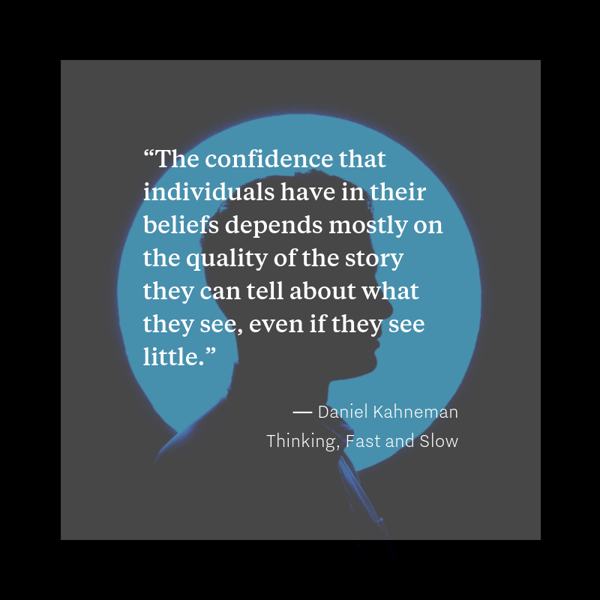The battle for an emotional connection is the newest frontier in the battle for customer experience.Humans are emotional decision makers. It is not a great challenge to most people’s intuition to say so. When asked, most would accept that when making purchases, emotion plays a part in forming our beliefs and opinions, alongside rational thought and logic.

In Steve Peters’ 2012 book, “The Chimp Paradox”, the psychological mind is cheerfully described as three ‘brains’ that are used to make decisions:
The Chimp
The chimp is the quick decision maker, responsible for instinctive decisions such as ‘fight or flight’, but also other forms of ‘gut’ instinct and rapid decision-making, formed from both our internal hard-wiring and learned experiences, When our brain has decided not to invest the time and the processing power of the slower more rational thought processes, the Chimp is very often in control.
The Computer
This is the slow, rational, thinking brain. When we make decisions by weighing up the pros and cons, and we take the time to thoughtfully assess the options available to us, the computer is playing a more prominent role, though it doesn’t always win out over the chimp. Sometimes all the evidence tells us to buy the second hand car, but we still walk out of the showroom with the newest, shiniest model… and the payment plan to match!
The Human
The human represents our conscious mind, containing our internal narrative, including the stories that we tell ourselves, while also helping us to mediate between the other two brains.
The key takeaway from the Chimp Paradox, as well as books such as Thinking Fast and Slow by Daniel Kahneman, is that any one of these brains can take complete control but usually they work together, with the emotional “Chimp” often playing a key role in how people make purchasing decisions.
Recent research in marketing recognises the power of the emotional component in customer decisions and brand loyalty. In a HBR research published in 2016, it was shown that over a customer lifetime, customers with a strong emotional connection to a brand can be more than twice as valuable as highly satisfied customers.
When we have a strong emotional connection to a brand, it will automatically make our personal shortlist, whenever we think about a product category. Without a strong emotional association, the other brands have to work much harder to knock the love brand from its perch. With emotion, brands can seem to defy the laws of free market economics and outsell products with potentially better features at lower prices, if that emotional relationship with its customers can be maintained
An emotional connection to a brand is something we inherently understand through our own experiences. We all have our own emotional narratives about the brands we engage with which help us justify our brand loyalty, even when evidence might exist to counter that narrative. This leads to commonly held beliefs about a brand which we do not attempt to substantiate:
“I buy Apple devices because they just work”
“Disney movies provide a positive role model for my children”
“Nintendo really understand wholesome, story-driven gameplay”
If an emotional connection, driven by an internal narrative is so intuitive, why aren’t all customer experience functions appealing to the ’emotional shopper’?
The truth is that building an emotional connection with customers is difficult, and traditionally has been prohibitively expensive for most. In the 20th Century, the brands that have historically had the strongest emotional connections with customers have achieved this through investment across an extremely broad range of channels. Disney for example, achieved their cultural identity through a commercial ‘scorched earth’ policy, reaching the minds of children through ubiquity, including the construction of their iconic theme parks. There aren’t many brands who can afford to build a Disney World in order to nurture and grow a customer’s emotional connection.
However, more recently the advancements in data storage, processing and AI capabilities are providing an alternative way to build an emotional connection using customer data at a fraction of the cost, but this isn’t to say that this is easy. To connect emotionally using data requires a focus on customer experience at every single touchpoint. For businesses with a customer base of millions, this means the processing of hundreds of millions, if not billions of data points. For industries such as Telecommunications the amount of data can be an order of magnitude higher still.
To turn this data into a meaningful and emotional connection, a customer’s data needs to be accessible in the moment and understood in the context of a customer’s narrative. Achieving this is the new frontier in customer engagement.
At Intent HQ we believe that AI can transform customer experience by understanding customers at a human level. We understand that:
- Information needs to be available across all touch points in near-real time in order to build a rich understanding of a customer’s narrative
- Data needs to be analysed in the context of the individual. How someone’s interests and passions change how they interact with brands
- AI needs to be at the heart of a true customer intelligence platform, not an afterthought
Emotional connection is the newest frontier of customer experience and the drive to engage directly with a human’s narrative is what continues to drive us forward.





